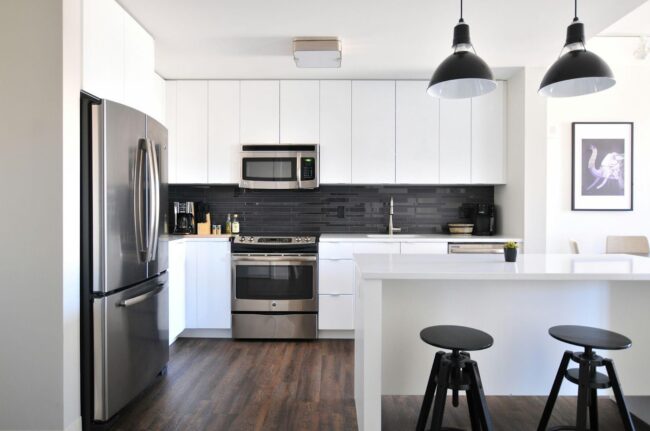
Cabinets are typically the primary thing on the list of priorities when it comes to kitchen renovation. Since they serve as the room’s structural support, you can make good use of the space by keeping and organising anything from dishes to groceries to appliances. They transform the look of your room and have a big influence on your budget.
However, selecting the correct kitchen cabinets may be difficult, and the variety of designs, materials, and patterns available can often be confusing for many homeowners. But, Don’t worry! In this post, we have detailed numerous common mistakes people make when choosing kitchen cabinets to help you avoid costly errors.
1. Not Measuring Properly
Measurements are the foundation of any kitchen design. They are similar to the blueprints for your personalised kitchen cabinet installation. One of the most typical errors made when looking for new kitchen cabinets is not properly measuring the available space. If you measure your space first, you may avoid purchasing cabinets that are too large or too small for your space.
Picking the wrong size might cause delays, additional expenditures, and serious hassles. The simplest way to avoid this issue is to take accurate kitchen dimensions before shopping for cabinetry. Take accurate measurements of the room’s width and height from floor to ceiling.
2. Using Incorrect Layout
It is critical to design the arrangement of your new cabinets before worrying about specifics such as material and finish. Furthermore, keep in mind that the kitchen is always one of the busiest and most often utilised rooms in any home. That is why it is so essential to have a visually appealing and practical layout.
Cabinets with incorrectly positioned drawers and doors, for example, will become a source of annoyance over time. Accurate location is critical to your overall pleasure. Consult with specialists about your kitchen area; they can provide the finest layout and design solutions.
3. Forgetting About Storage
Storage is the basis of every efficient kitchen. It stores all of your pots, pans, plates, and a variety of other stuff. Without sufficient storage, your kitchen may rapidly become a disorganised mess. Smart design choices can help you optimise your storage space. Choose vertical storage, lazy Susans, or built-in spice racks to maximise space and keep basics conveniently accessible.
Pull-out trays and organisers for pots, pans, and utensils can help you reduce clutter and find what you are looking for more quickly. Adding extra shelves or deep drawers is a terrific method to fit large goods and keep everything organised. Thoughtful storage arrangement not only improves functionality but also makes cooking more efficient and pleasant.
4. Overlooking Hardware Selection
Never ignore the importance of little things. Cabinet hardware can appear to be a small selection. Knobs, pulls, and hinges may completely change the appearance of your kitchen. Do not leave this as an afterthought. The perfect hardware may elevate your kitchen’s appearance, whilst the wrong decision can pull it down.
It is critical to select hardware that compliments your cabinets and the overall aesthetic of your kitchen. When selecting hardware, durability is equally crucial as appearance. You want something that will last through regular usage without displaying indications of wear and tear. Think about the finish as well. Matte black, brushed nickel, gold, etc. may appear great.
5. Choosing Style Over Functionality
While aesthetics are vital, your cabinets must be functional for everyday usage. Many homeowners select cabinets only for their appearance, without considering storage requirements, accessibility, or durability. While it is vital to select a design that suits your house, you should also consider how the cabinets will perform in your kitchen.
Consider how frequently you cook, the things you need to keep, and the workflow in your food preparation area. If you spend a lot of time cooking meals, your kitchen cabinets should be large and easily accessible. This consideration will help you select cabinets that not only look excellent but also improve the efficiency of your kitchen.
Conclusion
Choosing the appropriate kitchen cabinets requires careful consideration of appearance, functionality, price, and longevity. Avoiding these frequent blunders can help you make a selection that is visually beautiful, cost-effective, and long-lasting. With enough foresight and planning, you can design a kitchen that is both attractive and functional, adding value to your house and making meal preparation enjoyable.
